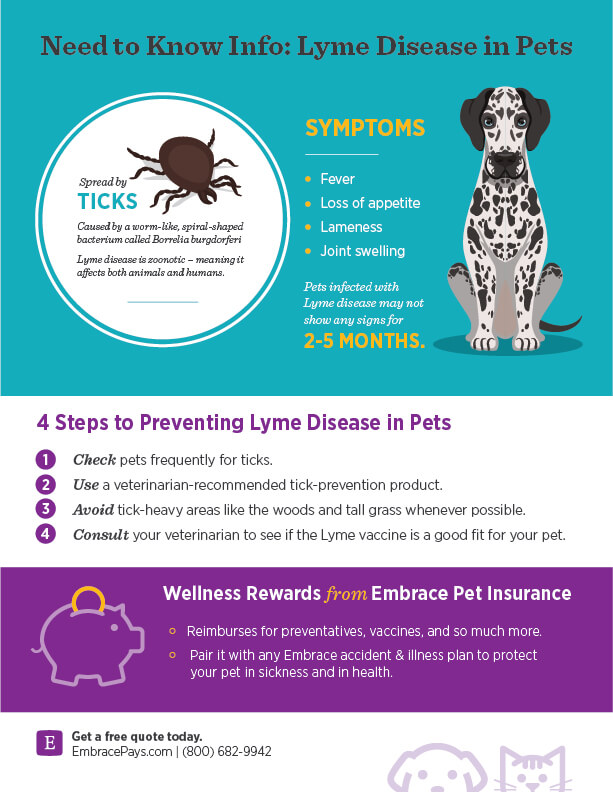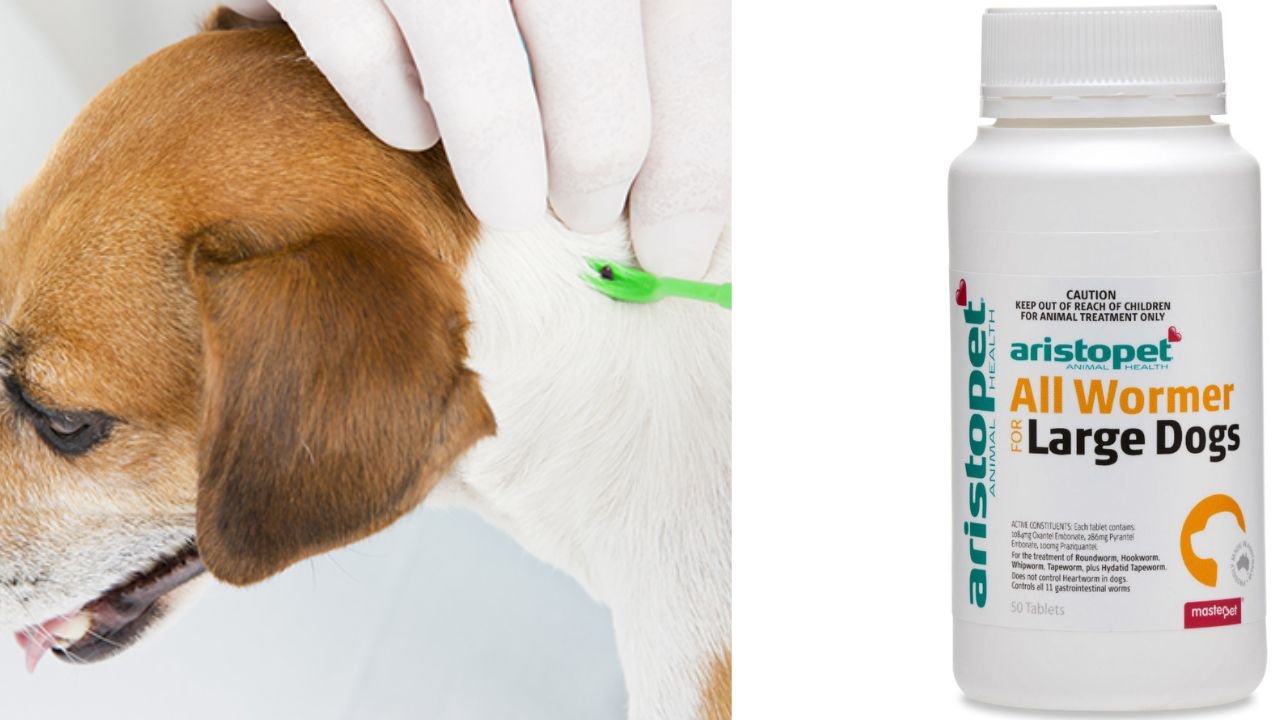Prevention of Lyme Disease in Dogs. To prevent Lyme disease in dogs, use tick prevention products and check for ticks regularly. Lyme disease is transmitted through tick bites, making prevention crucial for your furry friend’s health.
Taking proactive measures to protect your dog from ticks can significantly reduce the risk of Lyme disease. Implementing preventative strategies such as using tick repellents, avoiding tick-infested areas, and grooming your dog regularly can help keep them safe from this potentially serious illness.
This blog post will explore practical ways to prevent Lyme disease in dogs and provide valuable tips for keeping your pet healthy and happy.

Credit: www.longanimal.com
Lyme Disease In Dogs
Preventing Lyme disease in dogs is crucial. It is a tick-borne illness that can cause joint pain, fever, and fatigue. Protecting your furry friend with tick prevention medication and regular tick checks can reduce the risk of Lyme disease.
Causes And Transmission
Lyme disease in dogs is caused by the bacterium Borrelia burgdorferi, transmitted through tick bites. Ticks pick up the bacteria from infected wildlife and then transfer it to dogs during a bite.
Symptoms To Watch For
Watch for fever, lethargy, lameness, and swollen joints. Dogs may also exhibit a loss of appetite and decreased activity.
Lyme disease in dogs is caused by the bacterium Borrelia burgdorferi, transmitted through tick bites. Ticks pick up the bacteria from infected wildlife and then transfer it to dogs during a bite.
Causes And Transmission
To prevent Lyme disease in dogs, it’s crucial to understand the causes and how it spreads. The bacterium Borrelia burgdorferi is the main culprit, transmitted through tick bites. Ticks acquire the bacteria when feeding infected wildlife and can then pass it on to dogs during subsequent bites.
Symptoms To Watch For
Recognizing Lyme disease symptoms in dogs is vital for early detection and treatment. Watch for signs like fever, lethargy, lameness, swollen joints, loss of appetite, and decreased activity. If your dog displays any of these symptoms, consult a veterinarian promptly.

Credit: www.diamondpet.com
Tick Habitats And Seasonal Risks
Understanding the habitats where ticks thrive and the seasons when they are most active is crucial for preventing Lyme disease in dogs. Ticks are commonly found in specific environments, and their activity levels vary throughout the year. Pet owners can take necessary precautions to protect their furry friends by being aware of these factors.
Common Tick Environments
Ticks can be found in various habitats, but some places are more likely to harbor these tiny pests than others. It’s essential to be aware of these everyday tick environments to minimize your dog’s exposure:
- Tall grasses and brushy areas
- Wooded and forested areas
- Leaf litter and dense vegetation
- Shrubs and bushes
- Moist and humid areas
These environments provide ticks with the ideal conditions to survive and thrive. When taking your dog for a walk or allowing them to play outdoors, it’s essential to avoid these tick-prone areas as much as possible.
High-risk Seasons For Lyme
The risk of Lyme disease transmission varies throughout the year, with certain seasons posing a higher threat than others. Knowing when ticks are most active can help you implement preventive measures during these high-risk periods. Here are the seasons when Lyme disease risk is typically elevated:
| Season | Risk Level |
|---|---|
| Spring | High |
| Summer | Very High |
| Fall | High |
| Winter | Low |
Ticks are most active and prevalent during the spring and summer months, making it crucial to take extra precautions to protect your dog. Regularly checking for ticks and using preventive measures such as tick repellents and collars can significantly reduce the risk of Lyme disease.
By understanding everyday tick environments and being aware of high-risk seasons for Lyme disease, you can take proactive steps to keep your furry companion safe. Prevention is critical to protecting your dog from tick-borne illnesses like Lyme disease.
Importance Of Regular Vet Check-ups
Regular vet check-ups are crucial for preventing and detecting Lyme disease in dogs. Visiting the vet regularly helps monitor your dog’s health and address any potential issues before they escalate.
Early Detection Benefits
Early detection of Lyme disease in dogs is essential for effective treatment. Regular vet check-ups enable the vet to identify any symptoms or signs of the disease in its early stages, increasing the chances of successful treatment.
Routine Blood Tests And Examinations
Routine blood tests and examinations during vet check-ups are vital for detecting Lyme disease in its early stages. These tests help identify any abnormalities in the blood that could indicate the presence of the disease, allowing for prompt intervention.

Credit: www.embracepetinsurance.com
Vaccination Against Lyme Disease
Available Vaccines
Different vaccines are available for preventing Lyme disease in dogs. Two common ones are:
- Recombinant vaccines
- Bacterin vaccines
Vaccination Schedule
The typical vaccination schedule for Lyme disease in dogs:
- Initial dose around 12 weeks
- Booster shot after 2-4 weeks
- Yearly booster to maintain immunity
Tick Prevention Strategies
Protect your furry friend from the dangers of Lyme disease with effective tick prevention strategies. Keep your dog safe and healthy by using tick repellents, checking for ticks regularly, and keeping your outdoor areas clean to minimize tick habitats.
Preventing ticks from infesting your furry friend is crucial to safeguard their health from Lyme disease. You can employ various strategies to effectively deter ticks from attaching to your dog. You can significantly reduce the risk of tick-borne diseases by using topical tick repellents and oral tick preventatives.
Topical Tick Repellents
Topical tick repellents are applied directly to your dog’s skin and are a barrier against ticks. These repellents contain active ingredients that repel ticks, preventing them from latching onto your dog’s fur. Choosing a topical repellent specifically formulated for dogs is essential, as certain products designed for humans can harm pets.
When applying a topical tick repellent, follow the manufacturer’s instructions. Apply the repellent in a well-ventilated area, wearing gloves if necessary, to protect yourself from potential side effects. Remember to part your dog’s fur and apply the repellent directly to the skin, focusing on where ticks are commonly found, such as the neck, ears, and armpits.
Oral Tick Preventatives
Oral tick preventatives are another effective method of protecting your dog from tick infestations. These medications are taken orally and work by killing ticks that attach to your dog, preventing them from transmitting diseases. Oral preventatives are available in different forms, such as chewable tablets or flavored treats, making them easier to administer to your furry companion.
Consult your veterinarian to determine the most suitable oral tick preventative for your dog. They will consider your dog’s age, weight, and overall health to recommend the appropriate medication. It is essential to strictly follow your veterinarian’s prescribed dosage and frequency to ensure optimal protection against ticks.
You can implement a comprehensive approach to tick prevention for your beloved canine companion by utilizing both topical tick repellents and oral tick preventatives. Remember to regularly check your dog for any signs of ticks, especially after spending time in grassy or wooded areas. With proper prevention strategies in place, you can significantly reduce the risk of Lyme disease and keep your dog happy and healthy.
Safe Tick Removal Techniques
Safely removing ticks from dogs is crucial to preventing Lyme disease transmission. Use fine-tipped tweezers to grasp the tick as close to the skin as possible and steadily pull upwards. Clean the area with antiseptic after removal to reduce the risk of infection.
Safe Tick Removal Techniques are crucial for preventing Lyme disease in dogs. As tick season approaches, it is important to take necessary precautions to keep your furry friend safe. This section will discuss step-by-step safe tick removal techniques and post-removal care.
Step-by-step Removal Guide
1. Prepare: Wear gloves and get a pair of fine-tipped tweezers. This will help remove the tick without leaving its head inside the dog’s skin.
2. Locate: Find the tick on your dog’s body. Check the armpits, ears, and neck, as these are the favorite spots of ticks.
3. Grasp: Grab the tick as close to the skin as possible with the tweezers.
4. Pull: Gently pull the tick straight out with steady pressure. Do not twist or jerk the tick, as this may cause its mouthparts to break off and remain in the skin.
5. Check: Ensure you have removed the entire tick, including its head. If you notice any part of the tick left behind, use the tweezers to remove it.
Post-removal Care
After removing the tick, taking proper care of the affected area is essential to avoid any infection. Here are some steps you can follow:
– Clean the bite area with soap and water.
– Apply a small amount of rubbing alcohol or iodine to the bite area to disinfect it.
– Keep an eye on the area for the next few days. If you notice any redness or swelling, contact your veterinarian.
– Dispose of the tick by flushing it down the toilet or placing it in a sealed container.
In conclusion, safe tick removal techniques are essential for preventing Lyme disease in dogs. By following the step-by-step guide and taking proper post-removal care, you can keep your furry friend safe and healthy. Remember to be vigilant and regularly check your dog for ticks, especially during tick season.
Environmental Control Measures
Environmental control measures are crucial in preventing Lyme disease in dogs. By taking proactive steps to maintain a tick-free yard and implementing protective landscaping tips, pet owners can significantly reduce their dog’s risk of exposure to Lyme disease.
Maintaining A Tick-free Yard
Regular lawn mowing and removing leaf litter and tall grasses can help minimize tick habitats. Creating a barrier using gravel or wood chips between wooded areas and the yard can also deter ticks from migrating into the outdoor living space.
Protective Landscaping Tips
Planting deer-resistant plants and using mulch made from cedar or cypress can help repel ticks. Installing fencing to keep wildlife out and strategically placing bird feeders away from living areas can reduce the risk of tick encounters.
Educational Resources And Community Awareness
Lyme disease is a severe concern for dogs, but it can be prevented with the right educational resources and community awareness. By actively engaging with informational workshops and staying informed about local Lyme disease prevalence data, dog owners can take proactive steps to protect their pets.
Informational Workshops
Informational workshops offer dog owners a valuable opportunity to learn about Lyme disease prevention. These workshops cover essential topics such as tick identification, effective preventive measures, and the importance of regular veterinary check-ups. Through interactive sessions, pet owners gain the knowledge and skills to safeguard their furry companions from this debilitating illness.
Local Lyme Disease Prevalence Data
Understanding the local Lyme disease prevalence data is crucial for dog owners. By accessing this information, they can assess the level of risk in their area and tailor preventive strategies accordingly. Whether through online resources or community health reports, staying updated on the prevalence of Lyme disease enables pet owners to make informed decisions about protective measures for their dogs.
Frequently Asked Questions
Prevention of Lyme Disease in Dogs?
Prevention of Lyme Disease in Dogs. To prevent Lyme disease in dogs, use tick prevention products and check for ticks regularly. Lyme disease is transmitted through tick bites, making prevention crucial for your furry friend’s health.
What Is The Best Lyme Disease Prevention For Dogs?
The best Lyme disease prevention for dogs is using tick control products, avoiding tick-infested areas, and checking your dog for ticks regularly. Regular veterinarian check-ups and vaccinations can also help protect your dog from Lyme disease.
What Are 5 Ways To Prevent Lyme Disease?
To prevent Lyme disease, follow these five guidelines: 1. Wear protective clothing, like long sleeves and pants, when in wooded areas. 2. Use insect repellent with DEET on exposed skin. 3. Perform thorough tick checks after outdoor activities. 4. Remove ticks promptly with tweezers, pulling upward with steady pressure.
5. Keep yards tidy by mowing grass and removing leaf litter.
Is There A Preventative Shot For Lyme Disease In Dogs?
Yes, there is a preventative shot for Lyme disease in dogs. Vaccination can help protect dogs from contracting Lyme disease.
Does Dog Tick Prevention Prevent Lyme Disease?
Yes, dog tick prevention can help prevent Lyme disease by reducing the risk of tick bites.
Conclusion
Preventing Lyme disease in dogs is of utmost importance for their well-being. By following the necessary steps, such as frequent tick checks, tick prevention medication, and keeping your environment clean, you can significantly reduce the risk of your dog contracting this illness.
It is crucial to consult with your veterinarian and stay informed about the latest preventive measures available. Taking the necessary precautions ensures that your furry friend remains healthy and happy for years.

Hello I am Farhana I have been doing research on dogs since last 10 years. I have been doing research on dog special parts or dog food since last 10 years. I have gained knowledge about my dog in these ten years so. I want to blog about it daily.

